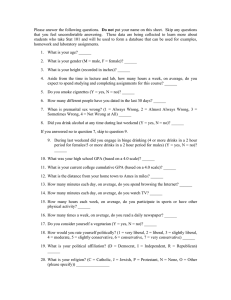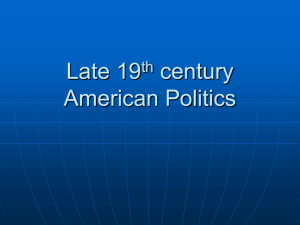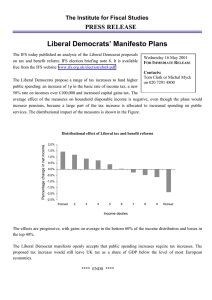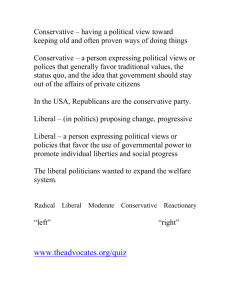Some initial thoughts on the Tory / Lib Dem coalition agreement
advertisement
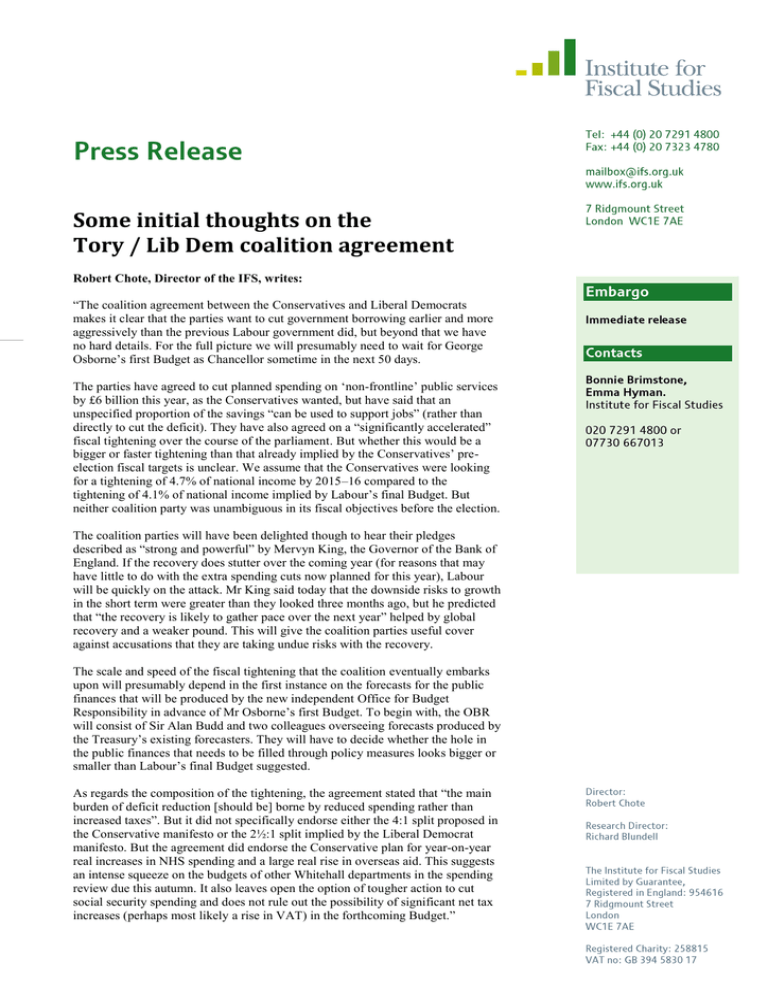
Some initial thoughts on the Tory / Lib Dem coalition agreement Robert Chote, Director of the IFS, writes: “The coalition agreement between the Conservatives and Liberal Democrats makes it clear that the parties want to cut government borrowing earlier and more aggressively than the previous Labour government did, but beyond that we have no hard details. For the full picture we will presumably need to wait for George Osborne‟s first Budget as Chancellor sometime in the next 50 days. The parties have agreed to cut planned spending on „non-frontline‟ public services by £6 billion this year, as the Conservatives wanted, but have said that an unspecified proportion of the savings “can be used to support jobs” (rather than directly to cut the deficit). They have also agreed on a “significantly accelerated” fiscal tightening over the course of the parliament. But whether this would be a bigger or faster tightening than that already implied by the Conservatives‟ preelection fiscal targets is unclear. We assume that the Conservatives were looking for a tightening of 4.7% of national income by 2015–16 compared to the tightening of 4.1% of national income implied by Labour‟s final Budget. But neither coalition party was unambiguous in its fiscal objectives before the election. The coalition parties will have been delighted though to hear their pledges described as “strong and powerful” by Mervyn King, the Governor of the Bank of England. If the recovery does stutter over the coming year (for reasons that may have little to do with the extra spending cuts now planned for this year), Labour will be quickly on the attack. Mr King said today that the downside risks to growth in the short term were greater than they looked three months ago, but he predicted that “the recovery is likely to gather pace over the next year” helped by global recovery and a weaker pound. This will give the coalition parties useful cover against accusations that they are taking undue risks with the recovery. The scale and speed of the fiscal tightening that the coalition eventually embarks upon will presumably depend in the first instance on the forecasts for the public finances that will be produced by the new independent Office for Budget Responsibility in advance of Mr Osborne‟s first Budget. To begin with, the OBR will consist of Sir Alan Budd and two colleagues overseeing forecasts produced by the Treasury‟s existing forecasters. They will have to decide whether the hole in the public finances that needs to be filled through policy measures looks bigger or smaller than Labour‟s final Budget suggested. As regards the composition of the tightening, the agreement stated that “the main burden of deficit reduction [should be] borne by reduced spending rather than increased taxes”. But it did not specifically endorse either the 4:1 split proposed in the Conservative manifesto or the 2½:1 split implied by the Liberal Democrat manifesto. But the agreement did endorse the Conservative plan for year-on-year real increases in NHS spending and a large real rise in overseas aid. This suggests an intense squeeze on the budgets of other Whitehall departments in the spending review due this autumn. It also leaves open the option of tougher action to cut social security spending and does not rule out the possibility of significant net tax increases (perhaps most likely a rise in VAT) in the forthcoming Budget.” Mike Brewer, Director of Direct Tax and Welfare research at the IFS, writes: “The coalition agreement commits the Government to increase the income tax personal allowance. The plans in the Liberal Democrats‟ manifesto for a £10,000 personal allowance would have cost around £17 billion a year, but the agreement does not suggest spending anything like this much. Instead, it says that the initial increase – to be announced in the forthcoming Budget for implementation in April 2011 – will be funded by the revenue that would have been used to increase the threshold for employee national insurance proposed by the Conservative Party, plus revenue from a rise in the rate of capital gains tax (CGT) for non-business assets. It also promises subsequent real increases in the income tax allowance each year, moving towards a long-term goal of £10,000. So what shape might this reform take? We might choose to read something into the promise that the benefits of the rise in the income tax personal allowance would be “focused on those with lower and middle incomes”. This would certainly not have been the case with the increase in the personal allowance proposed by the Liberal Democrats, which would have benefitted all those with incomes below £100,000. It is not clear what is meant by this phrasing, but it is possible that the Government would reduce the basic rate limit (i.e. the band of income over which someone pays basic-rate tax) to remove all of the gains of a higher personal allowance from higher-rate taxpayers. This would mirror exactly the form of the changes to employee National Insurance proposed in the Conservative manifesto. In effect, the Conservative Party could forgo its manifesto proposal to cut employee National Insurance bills by £150 a year (while changing the Upper Earnings Limit to remove the benefits from higher-rate taxpayers) in order to fund a £150 a year cut in income tax bills (with a change to the basic-rate threshold to remove the benefits from higher-rate taxpayers). If that is how they wanted to structure the change, this could take the income tax personal allowance in April 2011 close to around £7,300 (having incorporated the usual rise in line with inflation and the cut pre-announced by the last government) from its current £6,475, and would cost slightly more than the Conservative Party‟s proposed change to employee National Insurance (which we think would have cost around £2.5 billion). Of course, the new Government may wish to extend some benefits of the increased personal allowance to higher-rate taxpayers (which could cost more, or mean a smaller rise in the personal allowance). On the other hand, it says it will have additional revenues from CGT and possibly air passenger duty reforms which it could spend on a larger increase in the personal allowance. The CGT changes mentioned in the coalition agreement – higher rates for nonbusiness assets – are different from the complete set of changes to CGT in the Liberal Democrats‟ manifesto. In particular, no mention is made in the coalition agreement of a cut in the CGT threshold or reintroducing indexation for inflation, as proposed in the Liberal Democrats‟ manifesto. So it is not clear whether the proposed rise in the CGT rate for non-business assets would raise the same as the £1.9 billion a year claimed by the Liberal Democrats for their entire manifesto package, an estimate which we thought was conservative. It is also interesting to note what other policies have been confirmed in the coalition agreement, and which are not mentioned (although we cannot infer, of course, that any policy not mentioned has been dropped). The Conservative Party‟s proposed increase in inheritance tax thresholds has been explicitly put on hold, and there is no mention of its proposed freeze to council tax or its stamp duty cut for first-time buyers. Amongst the proposed tax rises, there is no mention of any reforms affecting non-doms, although both parties were in favour of a less generous tax regime for non-doms, and no mention of the Liberal Democrats‟ plans to restrict tax relief on pension contributions for higher-rate taxpayers or introduce a “mansion tax”. In line with both parties‟ manifestos, the agreement talks about cuts to child tax credit and child trust funds. More generally for pensions and welfare, the Conservative Party has got agreement to implement most of their welfare reforms, and the Liberal Democrats have won the argument over when to start indexing the basic state pension to earnings (namely in April 2011). No mention is made of the major, but revenue neutral, reforms to corporation tax and business rates proposed (respectively) in the Conservative Party‟s and Liberal Democrats‟ manifestos.” ENDS
